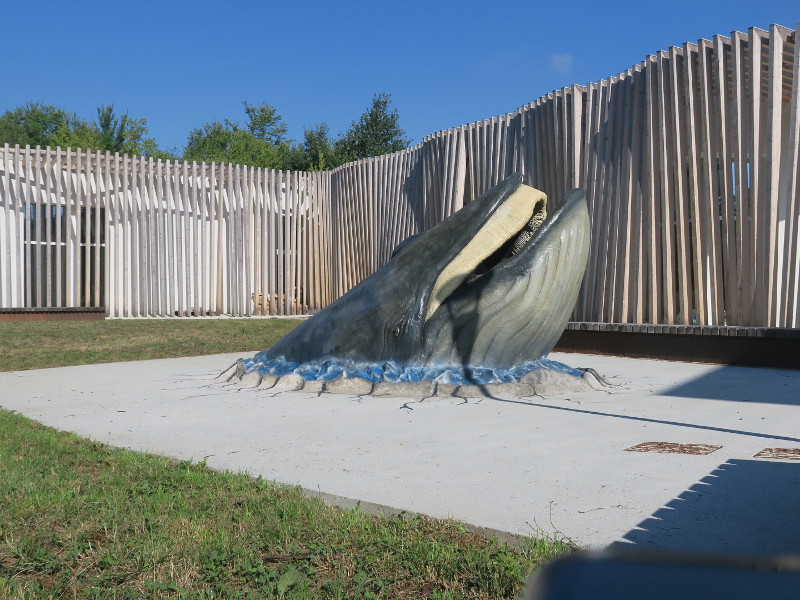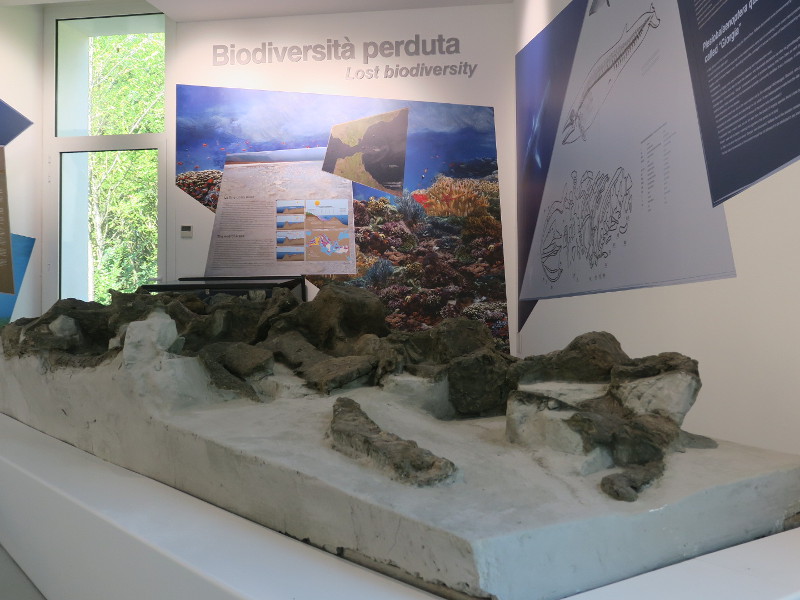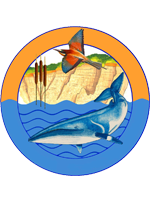Loc. San Nicomede
43039 Salsomaggiore Terme (PR)
|
View on MapMunicipality: Salsomaggiore Terme
Region: Emilia-Romagna
Tel. 0524/583595 (anche per whatsapp)
The new museum is located in the Stirone and Piacenzano Park, on the Millepioppi small farm (Loc. San Nicomede, Salsomaggiore Terme - PR) and brings together, in a modern, technologically advanced and appealing form, the contents of the two previous museums: the "Mare Antico" (Ancient Sea) museum, previously set up at the Salsomaggiore Congress Hall, and the Nature History Museum of the Stirone Park, previously at Scipione Ponte.
The new museum is made up of two Sections:
- The "Geopaleontological" section, housed in the new, modern building constructed by the Salsomaggiore Municipality, preserves one of the richest and most scientifically interesting palaeontological heritages recovered in the Po Valley Basin. The finds are the result of extensive research and excavations carried out by Raffaele Quarantelli (1930 - 2004) and other Salsomaggiore palaeontologists. These activities were carried out in the bed of the Stirone stream since the second half of the 1960s, when intense bottom erosion, caused by the stream waters, brought to light a series of sediments so rich in fossils to arouse the interest of the local population and the international scientific world. The richness of this heritage and the uniqueness of the Stirone stream as a true "open-air museum" led to the creation of the Stirone Regional Fluvial Park in 1988. Visiting the museum therefore allows tourists to discover the evolutionary processes that led to the birth of the Po River Basin and ruled its evolution between the Middle Miocene (about 14 million years ago), and the Middle Pleistocene (500 thousand years ago), projecting them into a distant world, when the "ancient sea" covered our lands.
Attractive graphics, all translated into English, illustrate steps and findings, while an interactive wall-mounted video station allows tourists to "travel" through geological eras. The tour continues with the section dedicated to "lost biodiversity", where the only specimen in the world of the whale "Plesiobalaenoptera quarantellii", recovered in 1985 when the erosion of the Stirone stream brought to light this almost intact skeleton dating back to the beginning of the Tortonian period (10-11 million years ago), stands out for its completeness and scientific interest.
The "impressive room", which projects the tourist into the silent, enveloping atmosphere of the underwater world, is very impressive: it houses the skeleton of the whale "Matilde", between whose vertebrae the teeth of a shark were found. All this suggests that the whale had been attacked by one or more sharks. A reproduction of a large shark specimen and a video projection show how the death of a cetacean can trigger food mechanisms and make the food chain concrete.
Another interactive station leads to more recent times and tells about "marine biodiversity yesterday and today": thanks to a touchscreen monitor the user can choose different insights, enabling the illumination of an artefact in a display case and a wall video story.
The earth history continues in the exhibition itinerary, where the "withdrawal" of sea water leads to the birth of the Po Valley and the man arrival: a number of artefacts from the presence of man in these lands bring us to the present day and tells us how one of the Salsomaggiore's greatest treasures - the saline thermal waters - spring from that ancient Po Valley sea that is beneath our feet today.
- A few meters divide the new building from the "Biological Section" of the Museum, set up by the Park Association in the former stable of the farmhouse. A section dedicated to "present time" allows us to understand and appreciate how the most remote history of these places has also shaped our environment, with its delicate river habitats, determining its richness in terms of biodiversity. Naturalist dioramas, illustrated panels and exhibits lead us to the discovery of the wealth of biological variety that characterises the Park today and to an understanding of the need for protection and conservation.
The owner of the MuMAB is the Municipality of Salsomaggiore Terme that, through an agreement, has entrusted the management of its services to the Ducato Parks.
The Municipality of Fidenza also contributed to the realisation of the museum, and now collaborated in the services' management.
The services are entrusted to the start-up Around Srls, which takes care of the methods of use and public access, as well as cultural and educational activities.
Guided tours:
- MuMAB experience - Thematic visit to the museum + educational workshop (the theme changes according to the seasons), on Wednedays, Fridays, Saturdays and Sundays at 4.30 p.m.
- Open-air MuMAB - Guided tour of the museum + excursion in the path, on Sundays at 9.00 a.m.
- Simply MuMAB - Guided tour of the museum, on Wednesdays and Fridays at 3.00 p.m., on Sundays and Sundays at 11.15 a.m. and 3.00 p.m.
Reservation recommended.
At MuMAB with the school
In addition to these activities, the museum offers several activities for schools, depending on the age of the students and with different themes. The proposals include guided tours, workshops and excursions, as well as different combinations to organise an educational and entertaining morning or afternoon.
 Education Catalogue 2023/2024
Education Catalogue 2023/2024
Opening times:
On Wednesdays and Fridays from 3.00 p.m. to 7.00 p.m.;
On Saturdays and Sundays from 9.00 a.m. to 1.00 p.m. and from 3.00 p.m. to 7.00 p.m.
For further information and bookings: www.millepioppi.it -
mumab@millepioppi.it or +39 0524/583595 (also for Whatsapp), Tuesday to Friday from 9.30 a.m. to 12.30 p.m., from 3.00 p.m. to 6.00 p.m. and during museum opening hours

Museo Mare Antico e Biodiversità (Ancient Sea and Biodiversity Museum)
(photo by PR Stirone e Piacenziano - Emilia Occidentale)

Museo Mare Antico e Biodiversità (Ancient Sea and Biodiversity Museum)
(photo by PR Stirone e Piacenziano - Emilia Occidentale)

Museo Mare Antico e Biodiversità (Ancient Sea and Biodiversity Museum)
(photo by PR Stirone e Piacenziano - Emilia Occidentale)

Museo Mare Antico e Biodiversità (Ancient Sea and Biodiversity Museum)
(photo by PR Stirone e Piacenziano - Emilia Occidentale)










